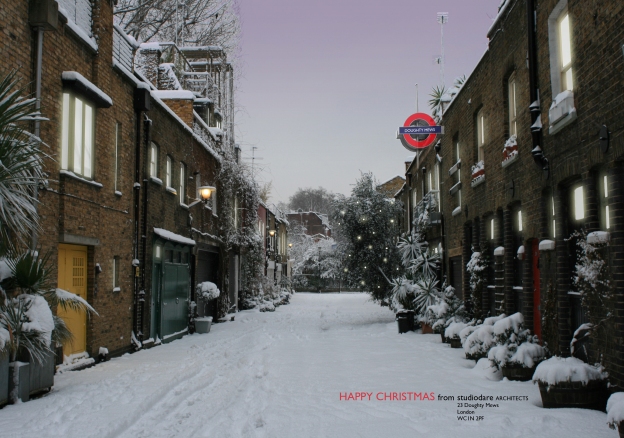New Housing Development
Studiodare have recently submitted planning applications for two new residential developments in LB Merton. Both schemes put into practice research we have undertaken that maximises net to gross floor space.
Shortlisted for The Sunday Times Future Homes Competition
Studiodare’s sustainable concept design, Triptech House, has been shortlisted for the British Homes Awards, organised by the Sunday Times.
We Haved Moved!
Our new address is:
Tanner Place
54-58 Tanner Street
London
SE1 3PH
All email address are unchanged
New Member of Staff
Studiodare is pleased to announce the arrival of a new member of staff Trisha Chauhan, a graduate in architecture from the University of Brighton.
Forgotten Spaces 2011
Studiodare is pleased to announce that we have been shortlisted for Forgotten Spaces, 2011. This competition, organised by the RIBA, calls for architects and designers to think up new uses for neglected spaces in the Greater London area.
Our proposal, located in Neasden, is a combined urban park, ‘agroforest’ and bee-keeping apiary. Completely open to the public, it tries to create and promote a mutual dependency between the community and the eco-system.
An exhibition of all shortlisted entries will be held at Somerset House in October, with the winning proposal announced shortly after.
www.architectsjournal.co.uk
Launch of our new website
We’re delighted to announce the launch of our new website!
Please have a look at it:
www.studiodare.com
“Excellent and innovative solution proposed by ‘Studiodare’” – QPCS January Newsletter
Planning approval has now being granted for studiodare’s proposed extension to Queens Park Community School in North London.
Despite the withdrawal of Government funding last year, Queens Park Community School is progressing with plans for the upgrade of the school facilities. Mindful of the disruption to teaching caused by construction work, studiodare have set an ambitious target of designing, tendering and completing the works in ten months.
Tenders for the works will be issued in March with an anticipated start in April. The aim is to complete the majority of the works during the Easter and Summer holiday periods.
A good deal of the credit for reaching planning so quickly should go to the client team who have made every effort to sign off the various design stages as quickly as possible.
www.qpcs.brent.sch.uk
Aminah
Given her nature and temperament it will come as no surprise to those who know her that Aminah has decided to spend the remaining months of her year out working in the voluntary sector. Following a 12 month stint with studiodare Aminah has now moved full time to the London based charity Ulfa Aid. During the year she spent with studiodare Aminah worked on various projects including the Northern Line Extension, Queen’s Park Community School, and last but not least this blog. Aminah’s diligence and commitment will be missed. We wish her well on the next stage of her career.
Energy from Waste (EfW)
Consolidating our move into the infrastructure sector Studiodare are now exploring typologies for an architecture of the new ‘urban industrialism’. This move supplements our work on integrating the functional aspects of transport systems into densely populated urban settings.
Our current research explores how waste management and decentralised energy systems can be integrated into existing neighbourhoods. We believe this is a significant design problem, but one that contemporary society needs to solve as a matter of urgency.
Danish Delegation
As part of an initiative promoted by the Danish Embassy Studiodare were recently invited to meet a delegation of Danish specialists to discuss issues surrounding ‘Energy from Waste’ and how to integrate this building type into urban environments. There was much synergy with our Danish colleagues, which will hopefully lead to collaboration on future projects.
Studiodare’s previous experience in this sector identified a hesitancy amongst local authorities. However, heightened awareness of this sector, supported by organizations such as the LDA, suggest attitudes are changing.
Schools
Although school funding has been drastically cut and the flawed BSF scrapped, the demand for additional and improved school accommodation remains for many schools.
Studiodare have recently been appointed by a school in North London, to develop ideas for a practical and affordable approach to meeting the schools requirements for new and upgraded accommodation and teaching facilities.
Housing Optimism
There are signs of a thaw in the housing market as lenders now release funds to enable developers to complete stalled projects.
In November Studiodare are planning to start construction of a new housing development in Chiswick, West London. The project, which comprises 7 houses arranged around a courtyard will be built to Code Level 3 standards.
A second stalled project in East Grinstead for 11 houses, which has had an earlier planning permission renewed, also looks likely to start in the new year.



